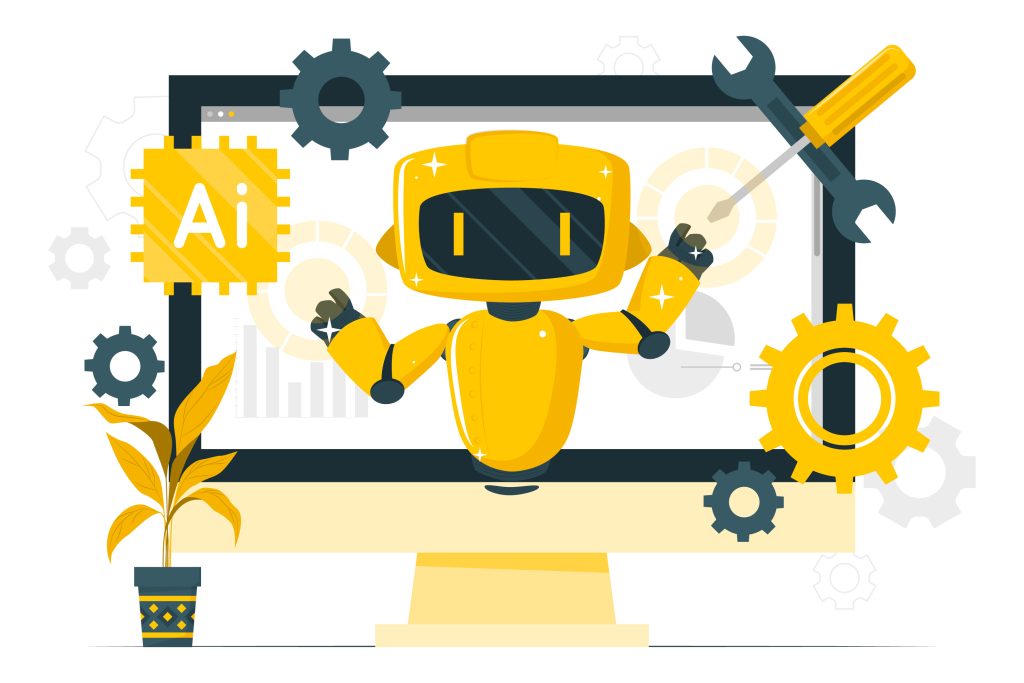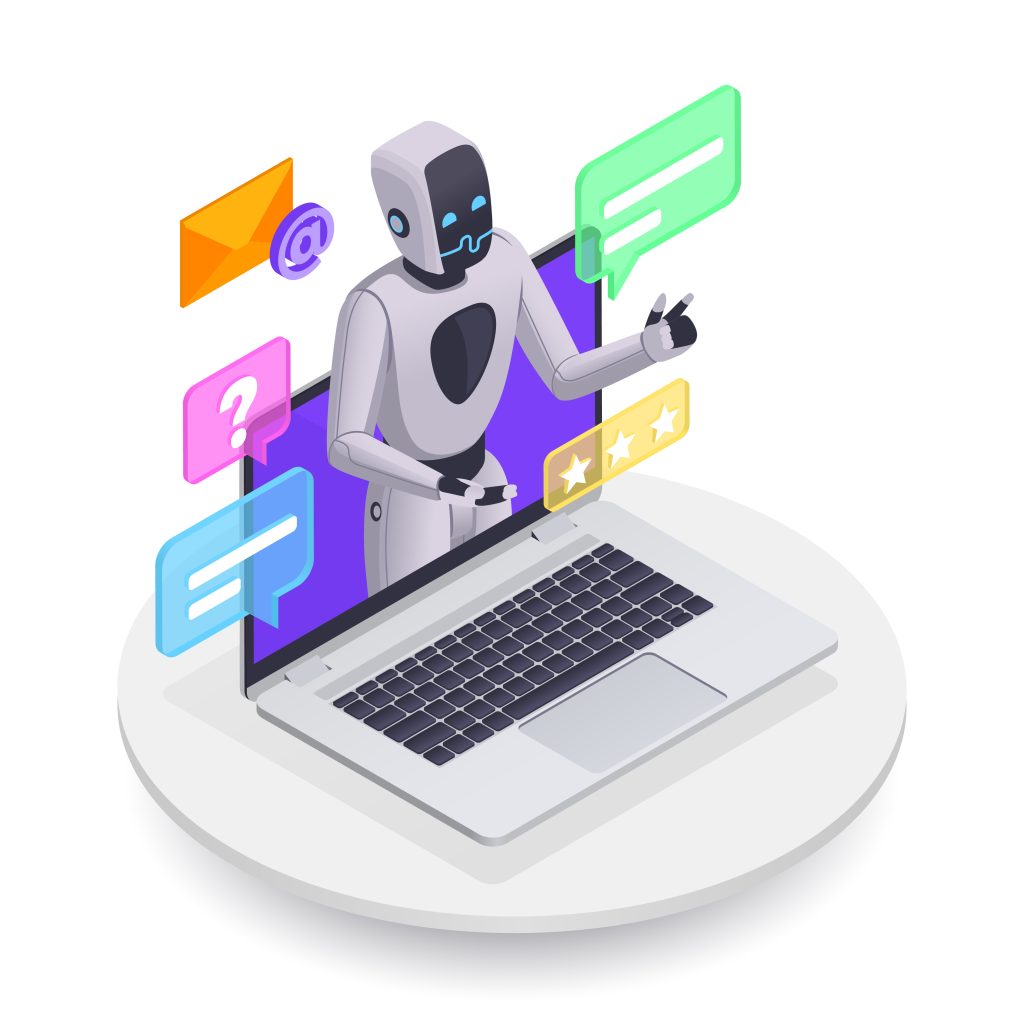Have you ever wondered, “Wait, was this made by a human or an AI?” after reading a tweet, watching a video, or seeing a design? Yes, exactly the same here. That misunderstanding? Thanks to generative AI, it is now occurring more frequently.
We’re not in a science fiction film. In the future, artificial intelligence (AI) will be able to create logos, write poetry, code programs, and even impersonate the voice of your favorite artist. Isn’t that both thrilling and a little unsettling?
Let’s make an effort to ascertain the true implications of this technology for us before we become alarmed. The truth is that generative AI is more than simply a useful tool. There is a change in culture.
We are better equipped to use it rather than be used by it, the more we understand what it is and what it can do.

What’s All the Buzz About Generative AI?
Generative artificial intelligence is not a passing fad. The technology underpinning ChatGPT, Midjourney and a dozen more names that keep coming up is this one. It’s the technology that produces rather than merely processes data. And that’s enormous.
You need a description of the product. Boom, done. Do you want to give your podcast a new song? Sorted. You want to come up with ten distinct logos for your new side project. You got it.
In only a year, it seems like we’ve gone from asking, “Can AI help us?” to asking, “Can we keep up with AI?”
But it’s more than just hype. In fact, people are utilizing it. Students, marketers, designers, developers, and content producers—it’s affecting every profession, every sector, and every online community.
Real-World Applications of Generative AI
Let’s bring it down to earth, okay? Where is the real use of generative AI?
Content Creation
It is being used by bloggers to overcome writer’s block. Product descriptions are being automated by brands. Even YouTubers are using AI Tools to write scripts for their videos.
Art and Design
Artists are creating ideas, experimenting with different styles, and repurposing images. It’s similar to having an incessant brainstorming companion.
Coding
With the help of technologies like GitHub Copilot, developers are producing code more quickly. It is undoubtedly accelerating things, but it is not taking their place.
Healthcare
AI is being used by researchers to forecast illnesses or simulate protein structures. Imagine developing drugs more quickly without sacrificing quality.
Education
Teachers are creating personalized tests in a matter of minutes, and students are receiving assistance in comprehending subjects.

Benefits of Embracing Generative AI
So, why should you care? Because it’s not just about cool tech. It’s about how it can actually make life easier.
- Time-saver: We’re all overburdened. AI makes it easier to get rid of the tedious tasks so you may concentrate on the enjoyable or strategic ones.
- Cost-effective: Small teams and startups now have access to creative resources they previously couldn’t afford.
- Enhances Creativity: It stimulates creativity rather than stifles it. Your strange thought at two in the morning? AI can help make it a reality.
- Personalization Power: AI may provide the impression that your communications or product recommendations were created just for a single person.
And perhaps the best part? You can utilize it without being a technical person.
Challenges That Come With Generative AI
Alright, let’s not mince words. Because of its strength, there are also genuine hazards.
- False information: AI can produce fake news with equal ease as authentic news. That is an issue.
- Bias: Data isn’t always fair, and AI learns from it. The output is skewed if the training data is.
- Copyright Dilemma: Who is the owner of AI-generated content? The instrument? The user? The individuals whose work it was influenced by?
- Workplace Anxiety: Let’s face it, certain positions may alter or perhaps disappear. Others, however, will change. This has happened with every technological advancement.
We must discuss this matter rather than dismiss it. No one benefits from acting as though there are no drawbacks.
What the Future Holds: Where is Generative AI Headed?
Wait, if you think AI is crazy right now.
AI will be able to do more than only write words and produce visuals in the future. It will create virtual worlds, films, and maybe even assist in the creation of tangible goods.
It may be included in your wearable technology, smart home, or automobile. It may co-pilot your Zoom meetings, co-author your book, or co-host your podcast.
Indeed, regulations are on the horizon. The next five years will be spent finding out how to grow without making mistakes, whether that is done by governments or digital corporations.
How You Can Prepare for the Generative AI Boom
What, then, are you truly capable of?
- Test out the tools: Begin modestly. Try out AI tools that are available for free. Check out what’s available.
- Remain Inquisitive: You don’t need to learn how to program. But are you aware of how the tools operate? Power is that.
- Pay Attention to the Human Factor: Plan. Compassion. Inventiveness. Those are your strong points. AI cannot take its place.
- Think Ethically: Make ethical use of AI if you’re employing it. Sources of credit. Steer clear of shortcuts that seem incorrect.
“Learn AI or get left behind” is not the threat here. “AI is happening—how do you want to be part of it?” is more accurate.
Wrap Up
The future of generative AI is not far off. As you read this, it’s taking place.
It’s altering the way we write, produce, construct, communicate, and pretty much everything else. It’s also full of opportunities, even though it might be daunting at times.
Thus, perhaps “Will AI take over?” isn’t the right question. Perhaps the answer is “How can we make sure we’re using it in a way that actually helps us?” Also, Webiators Technologies is available to help if you’re still having trouble determining where to begin or how your company might benefit from this change.
We assist companies in utilizing their true potential in ways that make sense for them, from strategy to execution. Together, let’s have a conversation and take the first step into the future.
FAQ’s
Ans: It’s AI that creates stuff—writing, images, music, code. Not just analyzing, but actually generating new content.
Ans: Some tasks, yeah. But it’ll also create new kinds of roles. Think of it like how the internet changed work.
Ans: Absolutely. Most tools are super user-friendly. If you can type, you can try them.
Ans: Bias, misinformation, and ethical concerns. Don’t just trust every output. Use your judgment.
Ans: Expect more video, voice, and 3D content. And more integration into everyday apps and devices.


